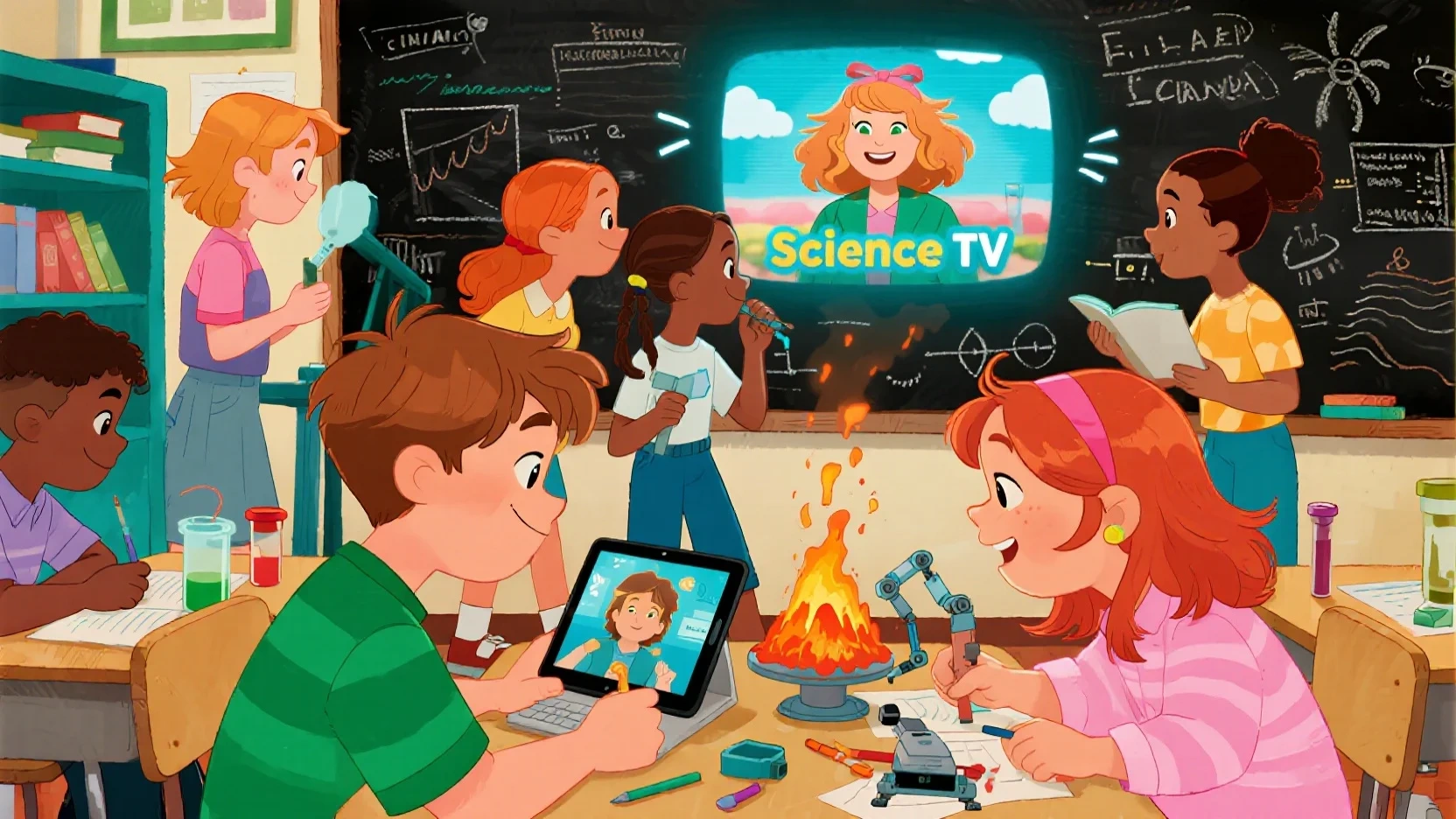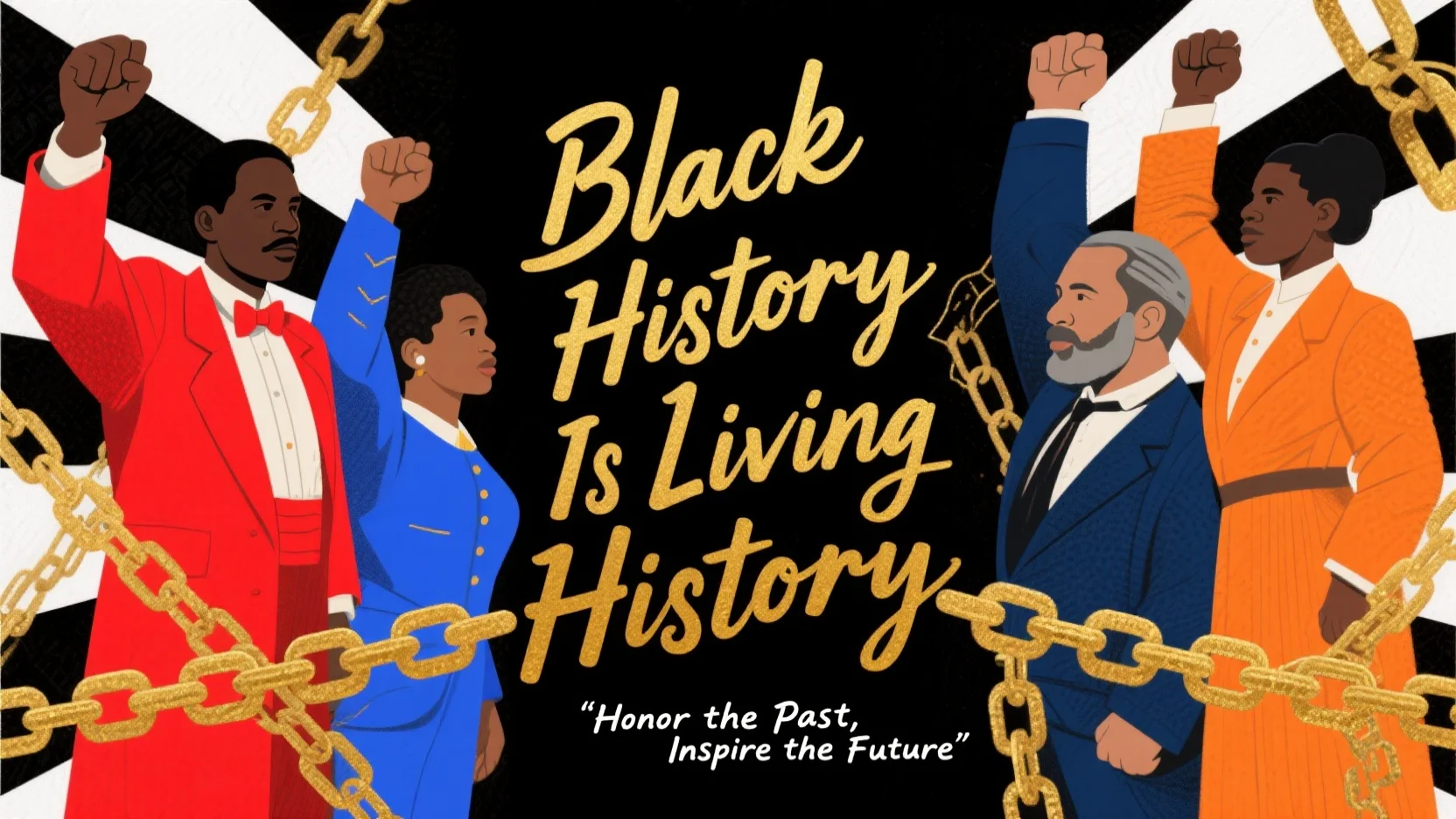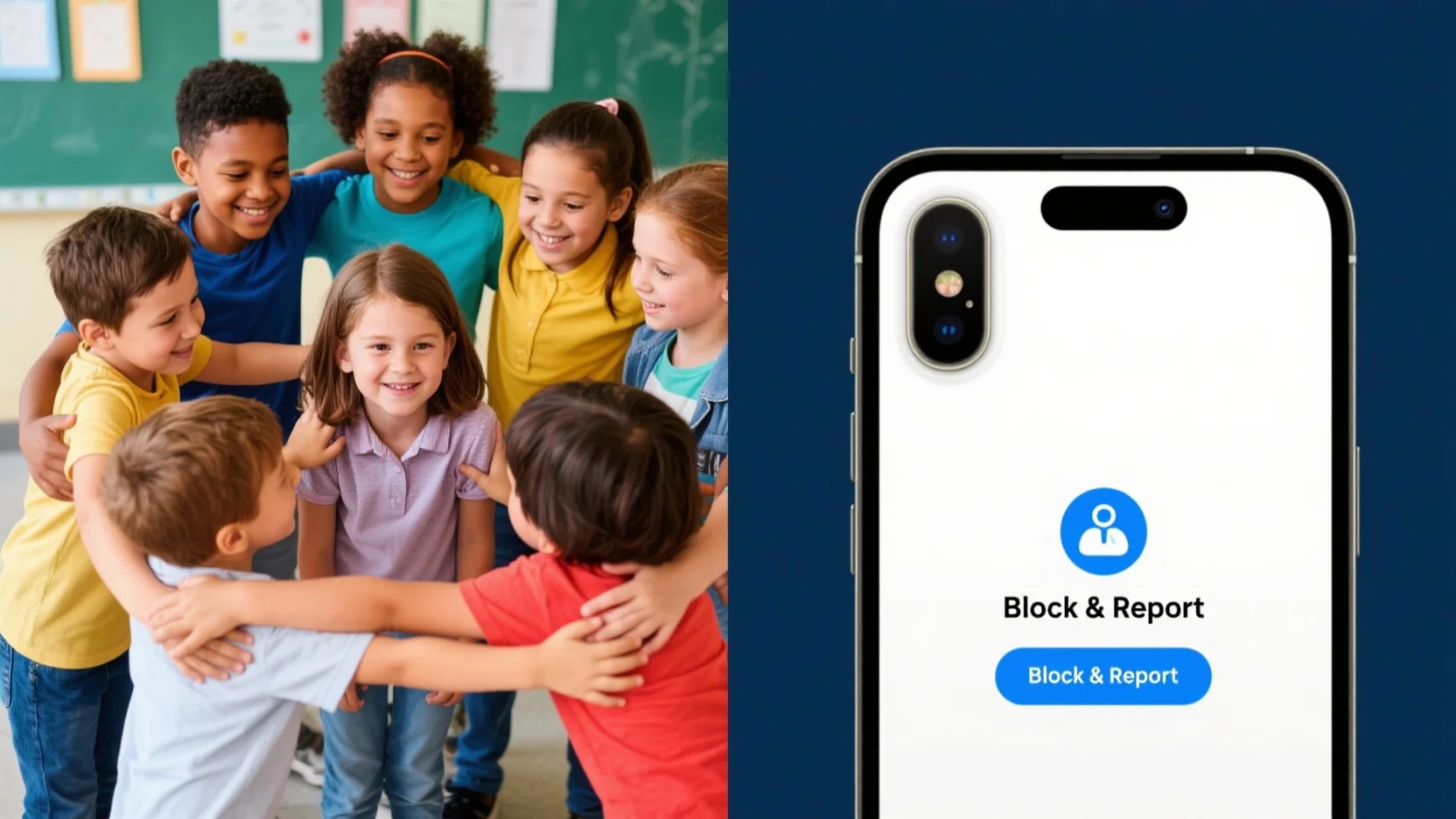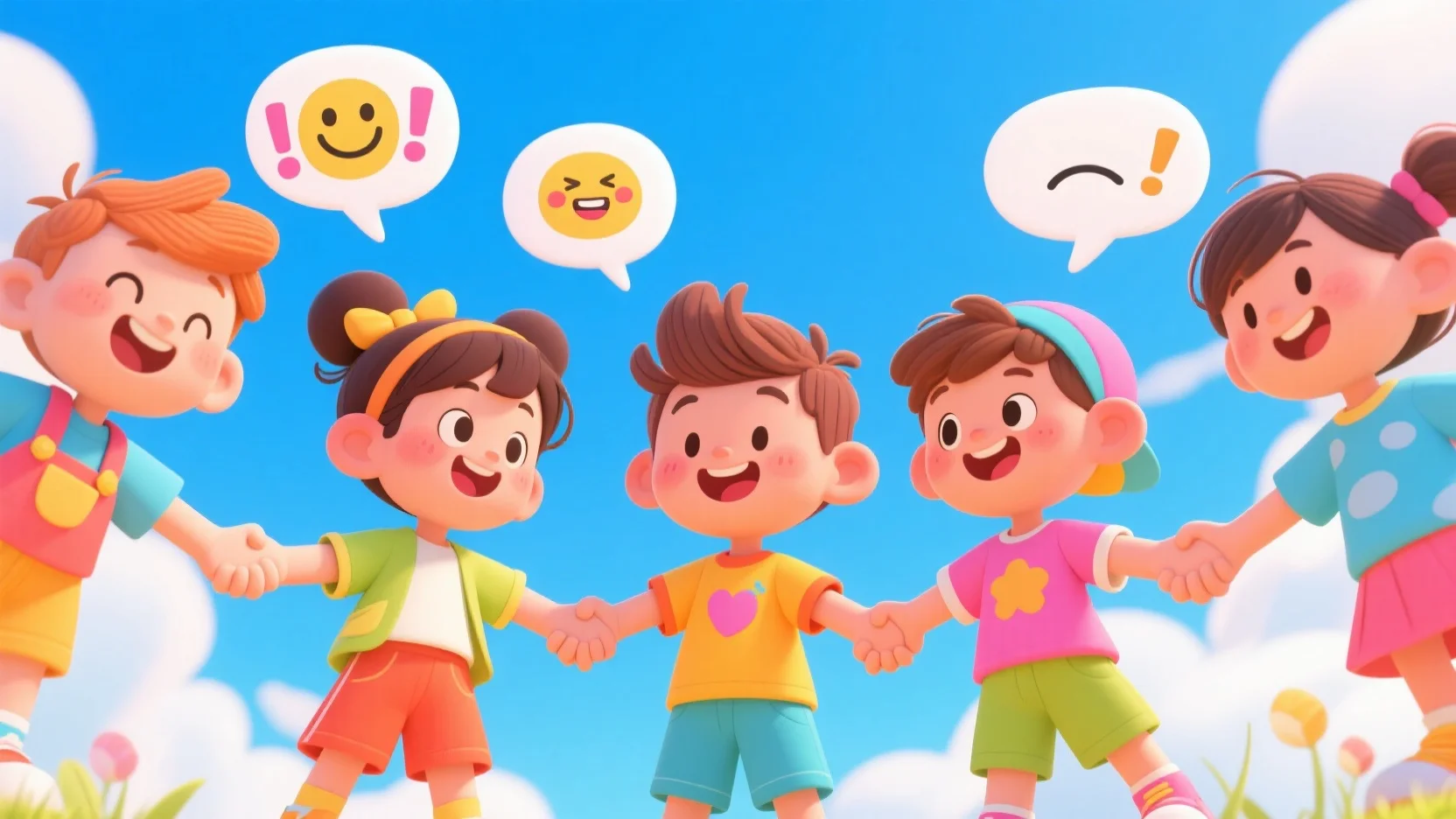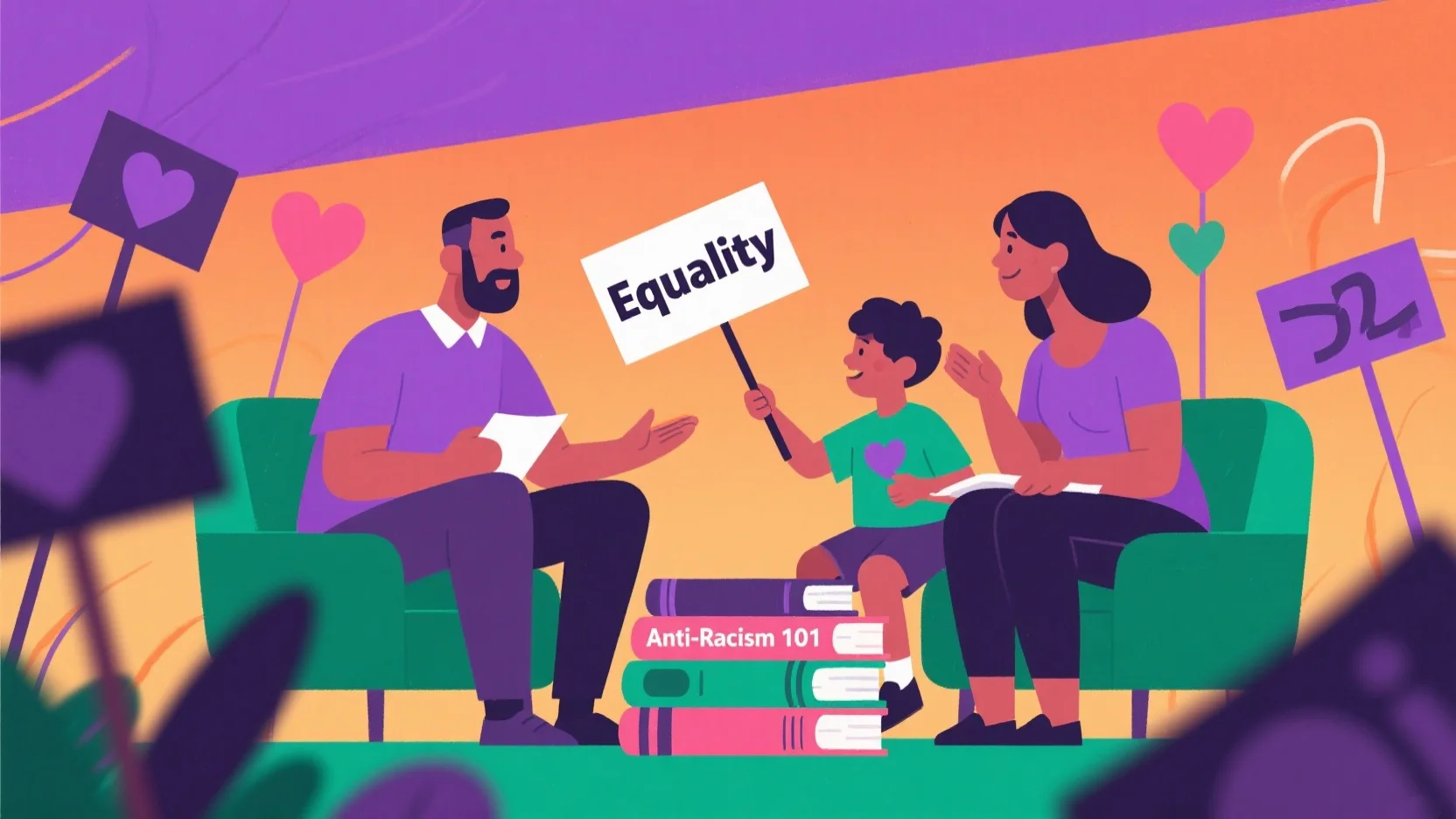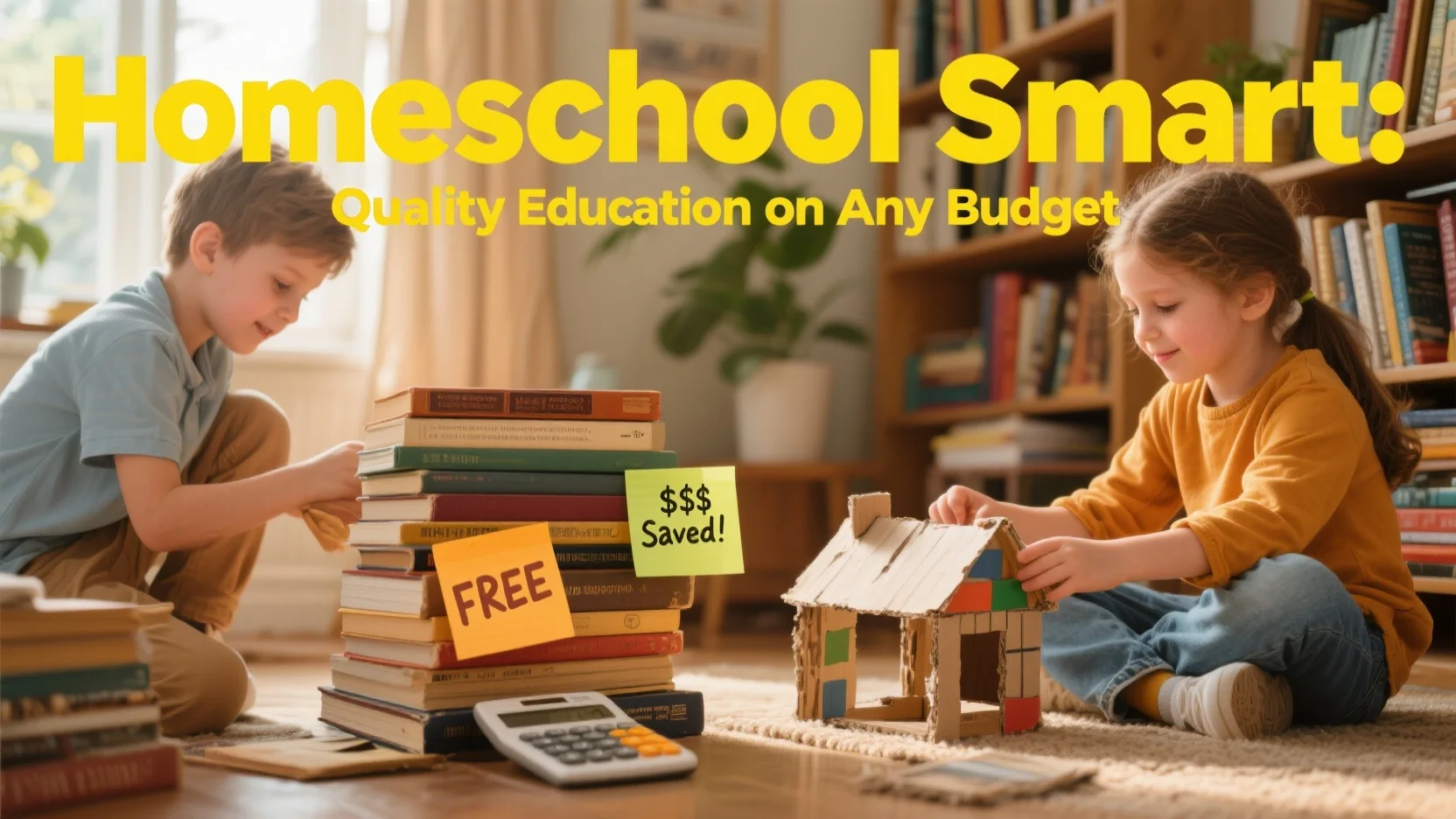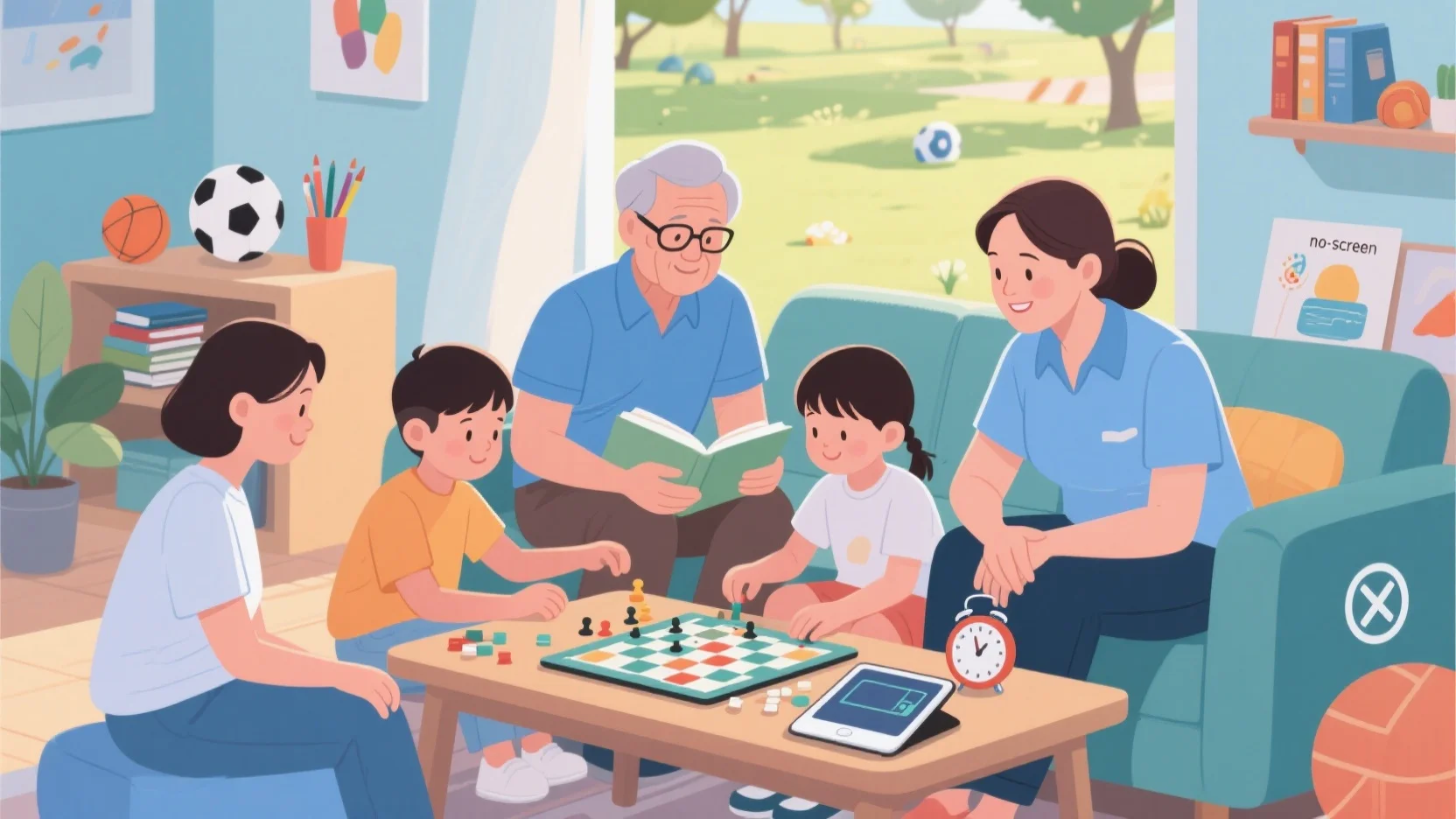Educational science TV shows have evolved from simple entertainment to powerful pedagogical tools that complement and enhance traditional STEM education. These programs engage students through visual storytelling, hands-on experimentation, and real-world applications, making complex scientific concepts accessible and exciting. Backed by research and classroom evidence, here’s an expanded exploration of how they support STEM learning:
1️⃣ Visual and Narrative Learning: Making Abstract Concepts Concrete 🎨📖
Why It Works
- •The Brain Processes Visuals Faster: Studies show that students retain 65% more information when it’s presented visually compared to text alone (EdTech Magazine).
- •Storytelling Anchors Knowledge: Shows like The Magic School Busand Elinor Wonders Whyuse narrative structures to explain scientific principles, helping students connect ideas to real-life scenarios.
Classroom Applications
- •Pre-Lesson Hook: Teachers use clips to introduce topics (e.g., showing a Bill Nyesegment before a physics lesson).
- •Post-Discussion Reinforcement: After watching, students explain concepts in their own words or draw diagrams.
2️⃣ Encouraging Hands-On Exploration and Inquiry-Based Learning 🔍👩🔬
How Shows Inspire Experimentation
- •Sid the Science Kidmodels the scientific method, prompting kids to:
- •Ask questions (“Why do shadows change size?”)
- •Make predictions (“If we move the light, what happens?”)
- •Test hypotheses (experimenting with flashlights and objects)
Real-World Impact
- •A Smithsonian study found that students who watched science shows were 40% more likely to engage in related experiments at home or school.
- •Teachers report that after watching Emily’s Wonder Lab, students eagerly design their own experiments (e.g., building mini volcanoes or paper rockets).
3️⃣ Measurable Learning Gains: Evidence from Research 📊✅
Case Study: The Cat in the Hat Knows a Lot About That!
- •Findings (SRI International): After 8 weeks of watching the show and playing related games, preschoolers showed:
- •28% improvement in understanding physical science (e.g., gravity, buoyancy).
- •Stronger problem-solving skills when faced with engineering challenges.
Long-Term Benefits
- •Students exposed to STEM TV programs score higher on standardized science tests (Journal of Science Education).
- •Early exposure correlates with increased STEM career interest in later years (SpringerOpen).
4️⃣ Representation Matters: Building STEM Identity 🌟👩🚀
Breaking Stereotypes
- •Shows like SciGirlsand Ada Twist, Scientistfeature diverse young scientists, helping underrepresented groups see themselves in STEM.
- •Research Insight: Girls who watch female-led science shows are 2x more likely to express interest in STEM careers (National Science Foundation).
Classroom Strategies
- •Career Connections: After watching Xavier Riddle and the Secret Museum, teachers discuss historical scientists like Marie Curie and George Washington Carver.
- •Role Model Spotlights: Students research real-life scientists featured in shows (e.g., Emily Calandrellifrom Emily’s Wonder Lab).
5️⃣ Enhancing Critical Thinking and Problem-Solving Skills 🤔⚙️
How Shows Teach Logic
- •Lyla in the Loop(PBS Kids) introduces computational thinking through puzzles (e.g., designing a carnival game).
- •Blaze and the Monster Machines explores physics and engineering (e.g., “How do wheels help cars move faster?”).
Classroom Extensions
- •Design Challenges: After watching, students build simple machines (e.g., levers, pulleys) with classroom materials.
- •Debates & Discussions: “Was the character’s solution the best one? What would you do differently?”
6️⃣ Bridging School and Real-World Science 🌍🔬
Connecting TV to Life
- •After Wild Krattsepisodes on ecosystems, students:
- •Create food webs based on local wildlife.
- •Visit nature centers to observe habitats firsthand.
Community & Family Engagement
- •Schools assign ”Watch & Do” homework, where families conduct simple experiments together (e.g., testing water filtration after a Magic School Busepisode).
Best STEM Shows for Different Age Groups 🏆
| Show | Best For | STEM Focus | Classroom Use |
|---|---|---|---|
| The Magic School Bus Rides Again | Grades K-5 | Biology, Physics | Intro to units, experiment inspiration |
| Emily’s Wonder Lab(Netflix) | Grades 1-6 | Engineering, Chemistry | Hands-on activity prompts |
| Elinor Wonders Why(PBS) | PreK-2 | Observation, Life Science | Nature walks & inquiry discussions |
| Xavier Riddle and the Secret Museum | Grades K-3 | History + Science | Cross-curricular lessons |
| SciGirls(PBS) | Grades 3-8 | All STEM fields | Career exploration, project-based learning |
Maximizing Impact: Tips for Teachers & Parents 🚀
1. Pair Viewing with Active Learning
- •Watch → Discuss → Experiment → Reflect (e.g., after Sid the Science Kid, measure shadows at different times of day).
2. Encourage Student-Created Content
- •Have kids film their own “science show” explaining a concept (boosts retention and creativity).
3. Connect to Local Science
- •After Wild Kratts, visit a zoo or park to observe animal adaptations.
4. Highlight Diverse Scientists
- •Use Hidden Figuresor Ada Twist, Scientistto discuss underrepresented pioneers in STEM.
Final Thought: Science TV as a Launchpad for Lifelong Learning ✨
When used intentionally, educational science TV shows do more than entertain—they ignite curiosity, reinforce classroom learning, and inspire future innovators. By integrating these programs with hands-on activities and discussions, educators can transform passive screen time into active, meaningful STEM engagement.
